Product Description
AC Induction Motor Asynchronous Electric Electromagnetic Brake Three Phase Scooter Generator Controller Linear High Speed Drive Exoesqueleto Elevator Gear Motor
Application of AC Induction Motor
AC induction motors are 1 of the most common types of electric motors in the world. They are used in a wide variety of applications, including:
- Fans: AC induction motors are used in fans of all sizes, from small desk fans to large industrial fans.
- Pumps: AC induction motors are used in pumps of all sizes, from small aquarium pumps to large industrial pumps.
- Compressors: AC induction motors are used in compressors of all sizes, from small refrigerator compressors to large air conditioning compressors.
- Machine tools: AC induction motors are used in machine tools of all sizes, from small drill presses to large milling machines.
- Conveyors: AC induction motors are used in conveyors of all sizes, from small food processing conveyors to large mining conveyors.
- Elevators: AC induction motors are used in elevators of all sizes, from small residential elevators to large commercial elevators.
- Wind turbines: AC induction motors are used in wind turbines of all sizes, from small home-scale turbines to large utility-scale turbines.
AC induction motors are a reliable and efficient type of motor that is well-suited for a wide variety of applications. They are relatively inexpensive to purchase and operate, and they require little maintenance. As a result, AC induction motors are a popular choice for a wide range of applications.
Here are some additional advantages of AC induction motors:
- Simple construction: AC induction motors are relatively simple to construct, which makes them relatively inexpensive to manufacture.
- Reliable operation: AC induction motors are very reliable and can operate for long periods of time without maintenance.
- Efficient operation: AC induction motors are very efficient, which means that they use less energy than other types of motors.
- Wide range of applications: AC induction motors can be used in a wide range of applications, making them a versatile choice for a variety of industrial and commercial applications.
/* January 22, 2571 19:08:37 */!function(){function s(e,r){var a,o={};try{e&&e.split(“,”).forEach(function(e,t){e&&(a=e.match(/(.*?):(.*)$/))&&1
| Application: | Industrial |
|---|---|
| Speed: | – |
| Number of Stator: | – |
| Function: | Driving |
| Casing Protection: | – |
| Number of Poles: | – |
| Samples: |
US$ 999/Piece
1 Piece(Min.Order) | |
|---|
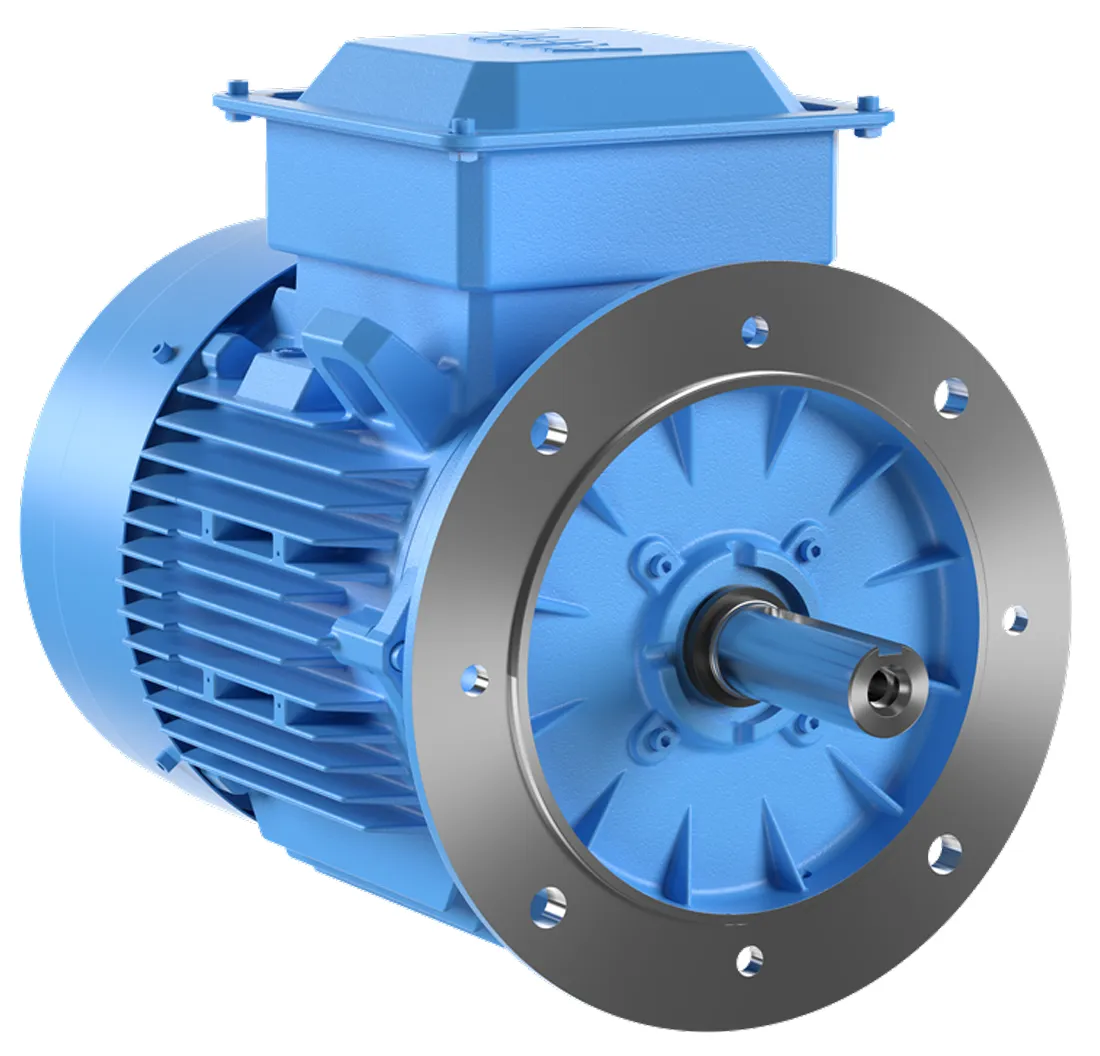
Can you explain the concept of motor efficiency and how it relates to AC motors?
Motor efficiency is a measure of how effectively an electric motor converts electrical power into mechanical power. It represents the ratio of the motor’s useful output power (mechanical power) to the input power (electrical power) it consumes. Higher efficiency indicates that the motor converts a larger percentage of the electrical energy into useful mechanical work, while minimizing energy losses in the form of heat and other inefficiencies.
In the case of AC motors, efficiency is particularly important due to their wide usage in various applications, ranging from residential appliances to industrial machinery. AC motors can be both induction motors, which are the most common type, and synchronous motors, which operate at a constant speed synchronized with the frequency of the power supply.
The efficiency of an AC motor is influenced by several factors:
- Motor Design: The design of the motor, including its core materials, winding configuration, and rotor construction, affects its efficiency. Motors that are designed with low-resistance windings, high-quality magnetic materials, and optimized rotor designs tend to have higher efficiency.
- Motor Size: The physical size of the motor can also impact its efficiency. Larger motors generally have higher efficiency because they can dissipate heat more effectively, reducing losses. However, it’s important to select a motor size that matches the application requirements to avoid operating the motor at low efficiency due to underloading.
- Operating Conditions: The operating conditions, such as load demand, speed, and temperature, can influence motor efficiency. Motors are typically designed for maximum efficiency at or near their rated load. Operating the motor beyond its rated load or at very light loads can reduce efficiency. Additionally, high ambient temperatures can cause increased losses and reduced efficiency.
- Magnetic Losses: AC motors experience losses due to magnetic effects, such as hysteresis and eddy current losses in the core materials. These losses result in heat generation and reduce overall efficiency. Motor designs that minimize magnetic losses through the use of high-quality magnetic materials and optimized core designs can improve efficiency.
- Mechanical Friction and Windage Losses: Friction and windage losses in the motor’s bearings, shaft, and rotating parts also contribute to energy losses and reduced efficiency. Proper lubrication, bearing selection, and reducing unnecessary mechanical resistance can help minimize these losses.
Efficiency is an important consideration when selecting an AC motor, as it directly impacts energy consumption and operating costs. Motors with higher efficiency consume less electrical power, resulting in reduced energy bills and a smaller environmental footprint. Additionally, higher efficiency often translates to less heat generation, which can enhance the motor’s reliability and lifespan.
Regulatory bodies and standards organizations, such as the International Electrotechnical Commission (IEC) and the National Electrical Manufacturers Association (NEMA), provide efficiency classes and standards for AC motors, such as IE efficiency classes and NEMA premium efficiency standards. These standards help consumers compare the efficiency levels of different motors and make informed choices to optimize energy efficiency.
In summary, motor efficiency is a measure of how effectively an AC motor converts electrical power into mechanical power. By selecting motors with higher efficiency, users can reduce energy consumption, operating costs, and environmental impact while ensuring reliable and sustainable motor performance.
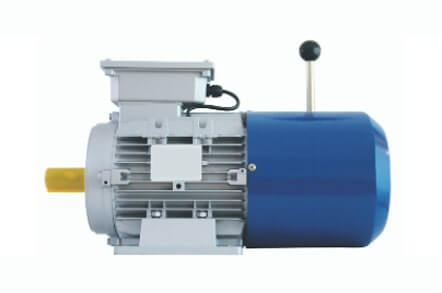
Are there energy-saving technologies or features available in modern AC motors?
Yes, modern AC motors often incorporate various energy-saving technologies and features designed to improve their efficiency and reduce power consumption. These advancements aim to minimize energy losses and optimize motor performance. Here are some energy-saving technologies and features commonly found in modern AC motors:
- High-Efficiency Designs: Modern AC motors are often designed with higher efficiency standards compared to older models. These motors are built using advanced materials and optimized designs to reduce energy losses, such as resistive losses in motor windings and mechanical losses due to friction and drag. High-efficiency motors can achieve energy savings by converting a higher percentage of electrical input power into useful mechanical work.
- Premium Efficiency Standards: International standards and regulations, such as the NEMA Premium® and IE (International Efficiency) classifications, define minimum energy efficiency requirements for AC motors. Premium efficiency motors meet or exceed these standards, offering improved efficiency compared to standard motors. These motors often incorporate design enhancements, such as improved core materials, reduced winding resistance, and optimized ventilation systems, to achieve higher efficiency levels.
- Variable Frequency Drives (VFDs): VFDs, also known as adjustable speed drives or inverters, are control devices that allow AC motors to operate at variable speeds by adjusting the frequency and voltage of the electrical power supplied to the motor. By matching the motor speed to the load requirements, VFDs can significantly reduce energy consumption. VFDs are particularly effective in applications where the motor operates at a partial load for extended periods, such as HVAC systems, pumps, and fans.
- Efficient Motor Control Algorithms: Modern motor control algorithms, implemented in motor drives or control systems, optimize motor operation for improved energy efficiency. These algorithms dynamically adjust motor parameters, such as voltage, frequency, and current, based on load conditions, thereby minimizing energy wastage. Advanced control techniques, such as sensorless vector control or field-oriented control, enhance motor performance and efficiency by precisely regulating the motor’s magnetic field.
- Improved Cooling and Ventilation: Effective cooling and ventilation are crucial for maintaining motor efficiency. Modern AC motors often feature enhanced cooling systems, including improved fan designs, better airflow management, and optimized ventilation paths. Efficient cooling helps prevent motor overheating and reduces losses due to heat dissipation. Some motors also incorporate thermal monitoring and protection mechanisms to avoid excessive temperatures and ensure optimal operating conditions.
- Bearings and Friction Reduction: Friction losses in bearings and mechanical components can consume significant amounts of energy in AC motors. Modern motors employ advanced bearing technologies, such as sealed or lubrication-free bearings, to reduce friction and minimize energy losses. Additionally, optimized rotor and stator designs, along with improved manufacturing techniques, help reduce mechanical losses and enhance motor efficiency.
- Power Factor Correction: Power factor is a measure of how effectively electrical power is being utilized. AC motors with poor power factor can contribute to increased reactive power consumption and lower overall power system efficiency. Power factor correction techniques, such as capacitor banks or power factor correction controllers, are often employed to improve power factor and minimize reactive power losses, resulting in more efficient motor operation.
By incorporating these energy-saving technologies and features, modern AC motors can achieve significant improvements in energy efficiency, leading to reduced power consumption and lower operating costs. When considering the use of AC motors, it is advisable to select models that meet or exceed recognized efficiency standards and consult manufacturers or experts to ensure the motor’s compatibility with specific applications and energy-saving requirements.
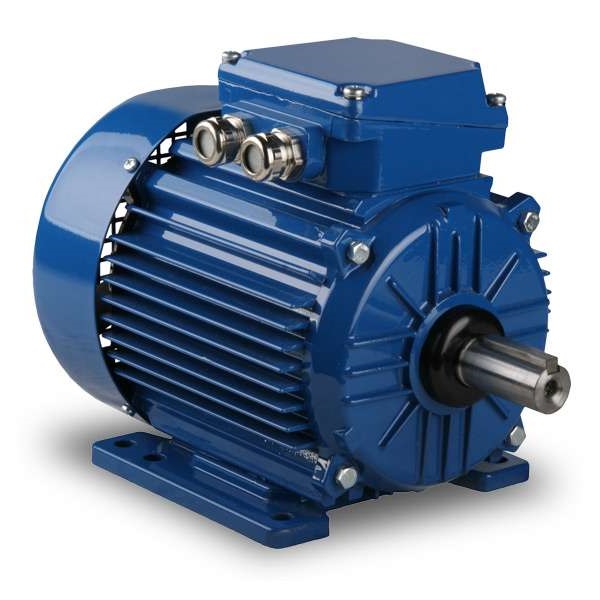
What is an AC motor, and how does it differ from a DC motor?
An AC motor, also known as an alternating current motor, is a type of electric motor that operates on alternating current. It converts electrical energy into mechanical energy through the interaction of magnetic fields. AC motors are widely used in various applications, ranging from household appliances to industrial machinery. Here’s a detailed explanation of what an AC motor is and how it differs from a DC motor:
AC Motor:
An AC motor consists of two main components: the stator and the rotor. The stator is the stationary part of the motor and contains the stator windings. These windings are typically made of copper wire and are arranged in specific configurations to create a rotating magnetic field when energized by an alternating current. The rotor, on the other hand, is the rotating part of the motor and is typically made of laminated steel cores with conducting bars or coils. The rotor windings are connected to a shaft, and their interaction with the rotating magnetic field produced by the stator causes the rotor to rotate.
The operation of an AC motor is based on the principles of electromagnetic induction. When the stator windings are energized with an AC power supply, the changing magnetic field induces a voltage in the rotor windings, which in turn creates a magnetic field. The interaction between the rotating magnetic field of the stator and the magnetic field of the rotor produces a torque, causing the rotor to rotate. The speed of rotation depends on the frequency of the AC power supply and the number of poles in the motor.
DC Motor:
A DC motor, also known as a direct current motor, operates on direct current. Unlike an AC motor, which relies on the interaction of magnetic fields to generate torque, a DC motor uses the principle of commutation to produce rotational motion. A DC motor consists of a stator and a rotor, similar to an AC motor. The stator contains the stator windings, while the rotor consists of a rotating armature with coils or permanent magnets.
In a DC motor, when a direct current is applied to the stator windings, a magnetic field is created. The rotor, either through the use of brushes and a commutator or electronic commutation, aligns itself with the magnetic field and begins to rotate. The direction of the current in the rotor windings is continuously reversed to ensure continuous rotation. The speed of a DC motor can be controlled by adjusting the voltage applied to the motor or by using electronic speed control methods.
Differences:
The main differences between AC motors and DC motors are as follows:
- Power Source: AC motors operate on alternating current, which is the standard power supply in most residential and commercial buildings. DC motors, on the other hand, require direct current and typically require a power supply that converts AC to DC.
- Construction: AC motors and DC motors have similar construction with stators and rotors, but the design and arrangement of the windings differ. AC motors generally have three-phase windings, while DC motors can have either armature windings or permanent magnets.
- Speed Control: AC motors typically operate at fixed speeds determined by the frequency of the power supply and the number of poles. DC motors, on the other hand, offer more flexibility in speed control and can be easily adjusted over a wide range of speeds.
- Efficiency: AC motors are generally more efficient than DC motors. AC motors can achieve higher power densities and are often more suitable for high-power applications. DC motors, however, offer better speed control and are commonly used in applications that require precise speed regulation.
- Applications: AC motors are widely used in applications such as industrial machinery, HVAC systems, pumps, and compressors. DC motors find applications in robotics, electric vehicles, computer disk drives, and small appliances.
In conclusion, AC motors and DC motors differ in their power source, construction, speed control, efficiency, and applications. AC motors rely on the interaction of magnetic fields and operate on alternating current, while DC motors use commutation and operate on direct current. Each type of motor has its advantages and is suited for different applications based on factors such as power requirements, speed control needs, and efficiency considerations.


editor by CX 2024-04-25
China Custom ZD Electric Brake / Fan Connection Box Right Angle Hollow Shaft Helical Hypoid AC Induction Gear Motor vacuum pump for ac
Product Description
Model Selection
ZD Leader has a wide range of micro motor production lines in the industry, including DC Motor, AC Motor, Brushless Motor, Planetary Gear Motor, Drum Motor, Planetary Gearbox, RV Reducer and Harmonic Gearbox etc. Through technical innovation and customization, we help you create outstanding application systems and provide flexible solutions for various industrial automation situations.
• Model Selection
Our professional sales representive and technical team will choose the right model and transmission solutions for your usage depend on your specific parameters.
• Drawing Request
If you need more product parameters, catalogues, CAD or 3D drawings, please contact us.
• On Your Need
We can modify standard products or customize them to meet your specific needs.
Product Parameters
Hypoid Gear Motor
| MOTOR TYPE | ZDF3 |
| OUTPUT POWER | 100W / 200W / 400W / 750W / 1500W / 2200W (Can Be Customized) |
| OUTPUT SHAFT | Hollow Shaft / CHINAMFG Shaft |
| Voltage type | 3 phase 220V(50/60HZ), 3 phase 380V(50/60HZ) |
| Phase | Three-Phase |
| Insulation Grade | F stage |
| Accessories | Electric Brake / Fan / Connection Box |
| Gear Ratio | 5K-240K |
Detailed Images
Other Products
Company Profile
/* January 22, 2571 19:08:37 */!function(){function s(e,r){var a,o={};try{e&&e.split(“,”).forEach(function(e,t){e&&(a=e.match(/(.*?):(.*)$/))&&1
| Application: | Industrial |
|---|---|
| Speed: | Constant Speed |
| Number of Stator: | Single-Phase |
| Function: | Driving, Control |
| Casing Protection: | Closed Type |
| Number of Poles: | 2 |
| Customization: |
Available
|
|
|---|
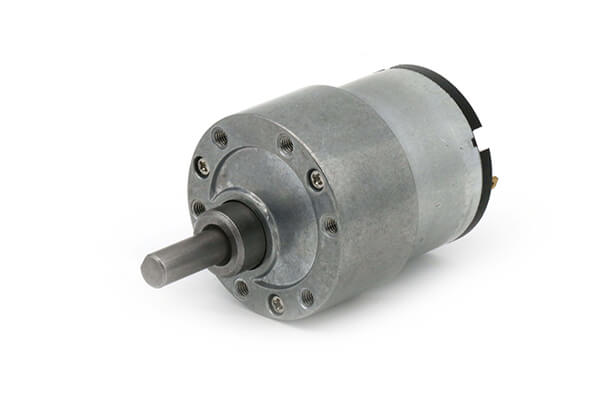
Can gear motors be used in robotics, and if so, what are some notable applications?
Yes, gear motors are widely used in robotics due to their ability to provide torque, precise control, and compact size. They play a crucial role in various robotic applications, enabling the movement, manipulation, and control of robotic systems. Here are some notable applications of gear motors in robotics:
1. Robotic Arm Manipulation:
Gear motors are commonly used in robotic arms to provide precise and controlled movement. They enable the articulation of the arm’s joints, allowing the robot to reach different positions and orientations. Gear motors with high torque capabilities are essential for lifting, rotating, and manipulating objects with varying weights and sizes.
2. Mobile Robots:
Gear motors are employed in mobile robots, including wheeled robots and legged robots, to drive their locomotion. They provide the necessary torque and control for the robot to move, turn, and navigate in different environments. Gear motors with appropriate gear ratios ensure the robot’s mobility, stability, and maneuverability.
3. Robotic Grippers and End Effectors:
Gear motors are used in robotic grippers and end effectors to control the opening, closing, and gripping force. By integrating gear motors into the gripper mechanism, robots can grasp and manipulate objects of various shapes, sizes, and weights. The gear motors enable precise control over the gripping action, allowing the robot to handle delicate or fragile objects with care.
4. Autonomous Drones and UAVs:
Gear motors are utilized in the propulsion systems of autonomous drones and unmanned aerial vehicles (UAVs). They drive the propellers or rotors, providing the necessary thrust and control for the drone’s flight. Gear motors with high power-to-weight ratios, efficient energy conversion, and precise speed control are crucial for achieving stable and maneuverable flight in drones.
5. Humanoid Robots:
Gear motors are integral to the movement and functionality of humanoid robots. They are used in robotic joints, such as hips, knees, and shoulders, to enable human-like movements. Gear motors with appropriate torque and speed capabilities allow humanoid robots to walk, run, climb stairs, and perform complex motions resembling human actions.
6. Robotic Exoskeletons:
Gear motors play a vital role in robotic exoskeletons, which are wearable robotic devices designed to augment human strength and assist in physical tasks. Gear motors are used in the exoskeleton’s joints and actuators, providing the necessary torque and control to enhance human abilities. They enable users to perform tasks with reduced effort, assist in rehabilitation, or provide support in physically demanding environments.
These are just a few notable applications of gear motors in robotics. Their versatility, torque capabilities, precise control, and compact size make them indispensable components in various robotic systems. Gear motors enable robots to perform complex tasks, move with agility, interact with the environment, and assist humans in a wide range of applications, from industrial automation to healthcare and exploration.
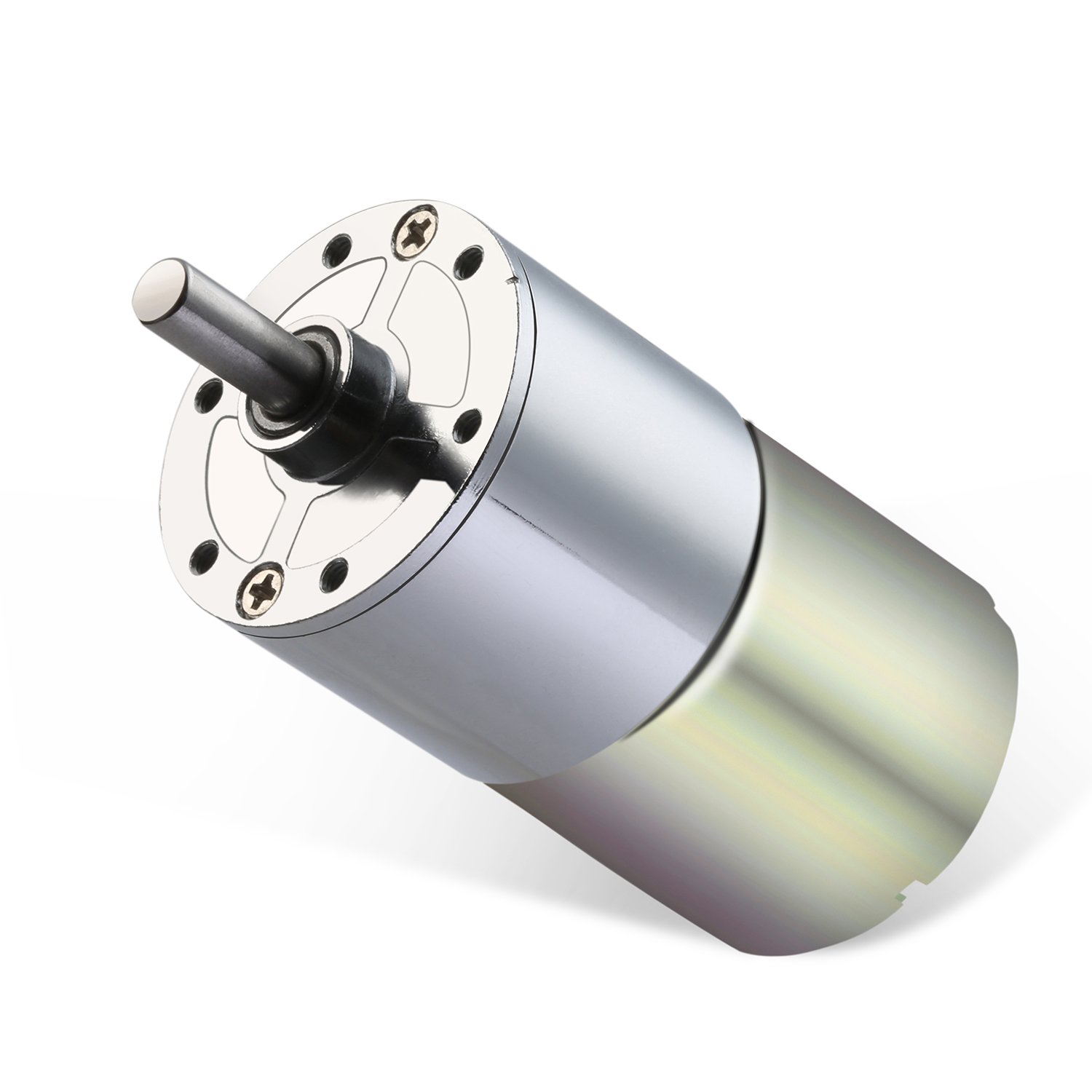
What are some common challenges or issues associated with gear motors, and how can they be addressed?
Gear motors, like any mechanical system, can face certain challenges or issues that may affect their performance, reliability, or longevity. However, many of these challenges can be addressed through proper design, maintenance, and operational practices. Here are some common challenges associated with gear motors and potential solutions:
1. Gear Wear and Failure:
Over time, gears in a gear motor can experience wear, resulting in decreased performance or even failure. The following measures can address this challenge:
- Proper Lubrication: Regular lubrication with the appropriate lubricant can minimize friction and wear between gear teeth. It is essential to follow manufacturer recommendations for lubrication intervals and use high-quality lubricants suitable for the specific gear motor.
- Maintenance and Inspection: Routine maintenance and periodic inspections can help identify early signs of gear wear or damage. Timely replacement of worn gears or components can prevent further damage and ensure the gear motor’s optimal performance.
- Material Selection: Choosing gears made from durable and wear-resistant materials, such as hardened steel or specialized alloys, can increase their lifespan and resistance to wear.
2. Backlash and Inaccuracy:
Backlash, as discussed earlier, can introduce inaccuracies in gear motor systems. The following approaches can help address this issue:
- Anti-Backlash Gears: Using anti-backlash gears, which are designed to minimize or eliminate backlash, can significantly reduce inaccuracies caused by gear play.
- Tight Manufacturing Tolerances: Ensuring precise manufacturing tolerances during gear production helps minimize backlash and improve overall accuracy.
- Backlash Compensation: Implementing control algorithms or mechanisms to compensate for backlash can help mitigate its effects and improve the accuracy of the gear motor.
3. Noise and Vibrations:
Gear motors can generate noise and vibrations during operation, which may be undesirable in certain applications. The following strategies can help mitigate this challenge:
- Noise Dampening: Incorporating noise-dampening features, such as vibration-absorbing materials or isolation mounts, can reduce noise and vibrations transmitted from the gear motor to the surrounding environment.
- Quality Gears and Bearings: Using high-quality gears and bearings can minimize vibrations and noise generation. Precision-machined gears and well-maintained bearings help ensure smooth operation and reduce unwanted noise.
- Proper Alignment: Ensuring accurate alignment of gears, shafts, and other components reduces the likelihood of noise and vibrations caused by misalignment. Regular inspections and adjustments can help maintain optimal alignment.
4. Overheating and Thermal Management:
Heat buildup can be a challenge in gear motors, especially during prolonged or heavy-duty operation. Effective thermal management techniques can address this issue:
- Adequate Ventilation: Providing proper ventilation and airflow around the gear motor helps dissipate heat. This can involve designing cooling fins, incorporating fans or blowers, or ensuring sufficient clearance for air circulation.
- Heat Dissipation Materials: Using heat-dissipating materials, such as aluminum or copper, in motor housings or heat sinks can improve heat dissipation and prevent overheating.
- Monitoring and Control: Implementing temperature sensors and thermal protection mechanisms allows for real-time monitoring of the gear motor’s temperature. If the temperature exceeds safe limits, the motor can be automatically shut down or adjusted to prevent damage.
5. Load Variations and Shock Loads:
Unexpected load variations or shock loads can impact the performance and durability of gear motors. The following measures can help address this challenge:
- Proper Sizing and Selection: Choosing gear motors with appropriate torque and load capacity ratings for the intended application helps ensure they can handle expected load variations and occasional shock loads without exceeding their limits.
- Shock Absorption: Incorporating shock-absorbing mechanisms, such as dampers or resilient couplings, can help mitigate the effects of sudden load changes or impacts on the gear motor.
- Load Monitoring: Implementing load monitoring systems or sensors allows for real-time monitoring of load variations. This information can be used to adjust operation or trigger protective measures when necessary.
By addressing these common challenges associated with gear motors through appropriate design considerations, regular maintenance, and operational practices, it is possible to enhance their performance, reliability, and longevity.

Can you explain the advantages of using gear motors in various mechanical systems?
Gear motors offer several advantages when utilized in various mechanical systems. Their unique characteristics make them well-suited for applications that require controlled power transmission, precise speed control, and torque amplification. Here’s a detailed explanation of the advantages of using gear motors:
1. Torque Amplification:
One of the key advantages of gear motors is their ability to amplify torque. By using different gear ratios, gear motors can increase or decrease the output torque from the motor. This torque amplification is crucial in applications that require high torque output, such as lifting heavy loads or operating machinery with high resistance. Gear motors allow for efficient power transmission, enabling the system to handle demanding tasks effectively.
2. Speed Control:
Gear motors provide precise speed control, allowing for accurate and controlled movement in mechanical systems. By selecting the appropriate gear ratio, the rotational speed of the output shaft can be adjusted to match the requirements of the application. This speed control capability ensures that the mechanical system operates at the desired speed, whether it needs to be fast or slow. Gear motors are commonly used in applications such as conveyors, robotics, and automated machinery, where precise speed control is essential.
3. Directional Control:
Another advantage of gear motors is their ability to control the rotational direction of the output shaft. By using different types of gears, such as spur gears, bevel gears, or worm gears, the direction of rotation can be easily changed. This directional control is beneficial in applications that require bidirectional movement, such as in actuators, robotic arms, and conveyors. Gear motors offer reliable and efficient directional control, contributing to the versatility and functionality of mechanical systems.
4. Efficiency and Power Transmission:
Gear motors are known for their high efficiency in power transmission. The gear system helps distribute the load across multiple gears, reducing the strain on individual components and minimizing power losses. This efficient power transmission ensures that the mechanical system operates with optimal energy utilization and minimizes wasted power. Gear motors are designed to provide reliable and consistent power transmission, resulting in improved overall system efficiency.
5. Compact and Space-Saving Design:
Gear motors are compact in size and offer a space-saving solution for mechanical systems. By integrating the motor and gear system into a single unit, gear motors eliminate the need for additional components and reduce the overall footprint of the system. This compact design is especially beneficial in applications with limited space constraints, allowing for more efficient use of available space while still delivering the necessary power and functionality.
6. Durability and Reliability:
Gear motors are designed to be robust and durable, capable of withstanding demanding operating conditions. The gear system helps distribute the load, reducing the stress on individual gears and increasing overall durability. Additionally, gear motors are often constructed with high-quality materials and undergo rigorous testing to ensure reliability and longevity. This makes gear motors well-suited for continuous operation in industrial and commercial applications, where reliability is crucial.
By leveraging the advantages of torque amplification, speed control, directional control, efficiency, compact design, durability, and reliability, gear motors provide a reliable and efficient solution for various mechanical systems. They are widely used in industries such as robotics, automation, manufacturing, automotive, and many others, where precise and controlled mechanical power transmission is essential.


editor by CX 2024-04-15
China best ZD China Manufacturer Wholesale AC Brake Electric Gear Motor For Automated Equipment with Hot selling
Product Description
Model Selection
ZD Leader has a wide range of micro motor production lines in the industry, including DC Motor, AC Motor, Brushless Motor, Planetary Gear Motor, Drum Motor, Planetary Gearbox, RV Reducer and Harmonic Gearbox etc. Through technical innovation and customization, we help you create outstanding application systems and provide flexible solutions for various industrial automation situations.
• Model Selection
Our professional sales representive and technical team will choose the right model and transmission solutions for your usage depend on your specific parameters.
• Drawing Request
If you need more product parameters, catalogues, CAD or 3D drawings, please contact us.
• On Your Need
We can modify standard products or customize them to meet your specific needs.
Product Parameters
Features:
1) Dimensions: 90mm
2) Power: 60, 90, 120W
3) Voltage: 110V, 220V
4) Speed:
50Hz: 90~ 1350rpm
60Hz: 90~ 1650rpm
5) Reduction ratio: 3~ 750K
| Gearhead Model | Gear Ratio |
| 5GN *K | 3,3.6,5,6,7.5,9,12.5,15,18,25,30,36,50,60,75,90,100,120,150,180,200~750 |
| 5GN10XK(Decimal gearhead) | |
Other Related Products
Click here to find what you are looking for:
Company Profile
FAQ
Q: What’re your main products?
A: We currently produce Brushed Dc Motors, Brushed Dc Gear Motors, Planetary Dc Gear Motors, Brushless Dc Motors, Stepper motors, Ac Motors and High Precision Planetary Gear Box etc. You can check the specifications for above motors on our website and you can email us to recommend needed motors per your specification too.
Q: How to select a suitable motor?
A:If you have motor pictures or drawings to show us, or you have detailed specs like voltage, speed, torque, motor size, working mode of the motor, needed lifetime and noise level etc, please do not hesitate to let us know, then we can recommend suitable motor per your request accordingly.
Q: Do you have a customized service for your standard motors?
A: Yes, we can customize per your request for the voltage, speed, torque and shaft size/shape. If you need additional wires/cables soldered on the terminal or need to add connectors, or capacitors or EMC we can make it too.
Q: Do you have an individual design service for motors?
A: Yes, we would like to design motors individually for our customers, but it may need some mold developing cost and design charge.
Q: What’s your lead time?
A: Generally speaking, our regular standard product will need 15-30days, a bit longer for customized products. But we are very flexible on the lead time, it will depend on the specific orders.
/* January 22, 2571 19:08:37 */!function(){function s(e,r){var a,o={};try{e&&e.split(“,”).forEach(function(e,t){e&&(a=e.match(/(.*?):(.*)$/))&&1
| Application: | Industrial |
|---|---|
| Speed: | Variable Speed |
| Number of Stator: | Single-Phase |
| Function: | Control |
| Casing Protection: | Closed Type |
| Number of Poles: | 2 |
| Customization: |
Available
|
|
|---|
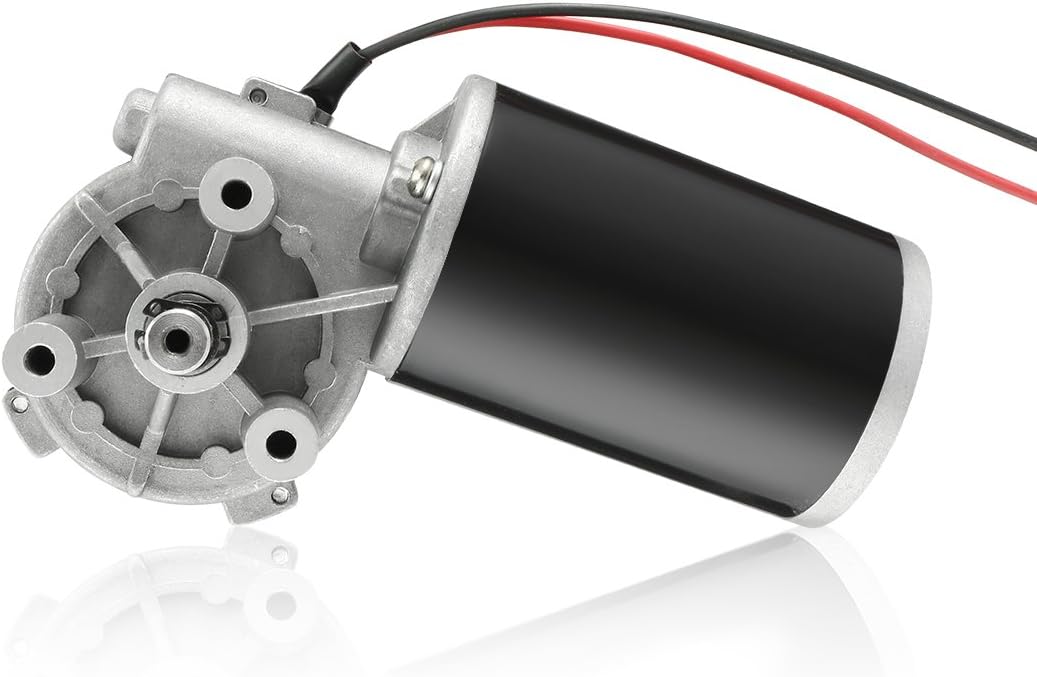
Are there innovations or emerging technologies in the field of gear motor design?
Yes, there are several innovations and emerging technologies in the field of gear motor design. These advancements aim to improve the performance, efficiency, compactness, and reliability of gear motors. Here are some notable innovations and emerging technologies in gear motor design:
1. Miniaturization and Compact Design:
Advancements in manufacturing techniques and materials have enabled the miniaturization of gear motors without compromising their performance. Gear motors with compact designs are highly sought after in applications where space is limited, such as robotics, medical devices, and consumer electronics. Innovative approaches like micro-gear motors and integrated motor-gear units are being developed to achieve smaller form factors while maintaining high torque and efficiency.
2. High-Efficiency Gearing:
New gear designs focus on improving efficiency by reducing friction and mechanical losses. Advanced gear manufacturing techniques, such as precision machining and 3D printing, allow for the creation of intricate gear tooth profiles that optimize power transmission and minimize losses. Additionally, the use of high-performance materials, coatings, and lubricants helps reduce friction and wear, improving overall gear motor efficiency.
3. Magnetic Gearing:
Magnetic gearing is an emerging technology that replaces traditional mechanical gears with magnetic fields to transmit torque. It utilizes the interaction of permanent magnets to transfer power, eliminating the need for physical gear meshing. Magnetic gearing offers advantages such as high efficiency, low noise, compactness, and maintenance-free operation. While still being developed and refined, magnetic gearing holds promise for various applications, including gear motors.
4. Integrated Electronics and Controls:
Gear motor designs are incorporating integrated electronics and controls to enhance performance and functionality. Integrated motor drives and controllers simplify system integration, reduce wiring complexity, and allow for advanced control features. These integrated solutions offer precise speed and torque control, intelligent feedback mechanisms, and connectivity options for seamless integration into automation systems and IoT (Internet of Things) platforms.
5. Smart and Condition Monitoring Capabilities:
New gear motor designs incorporate smart features and condition monitoring capabilities to enable predictive maintenance and optimize performance. Integrated sensors and monitoring systems can detect abnormal operating conditions, track performance parameters, and provide real-time feedback for proactive maintenance and troubleshooting. This helps prevent unexpected failures, extend the lifespan of gear motors, and improve overall system reliability.
6. Energy-Efficient Motor Technologies:
Gear motor design is influenced by advancements in energy-efficient motor technologies. Brushless DC (BLDC) motors and synchronous reluctance motors (SynRM) are gaining popularity due to their higher efficiency, better power density, and improved controllability compared to traditional brushed DC and induction motors. These motor technologies, when combined with optimized gear designs, contribute to overall system energy savings and performance improvements.
These are just a few examples of the innovations and emerging technologies in gear motor design. The field is continuously evolving, driven by the need for more efficient, compact, and reliable motion control solutions in various industries. Gear motor manufacturers and researchers are actively exploring new materials, manufacturing techniques, control strategies, and system integration approaches to meet the evolving demands of modern applications.
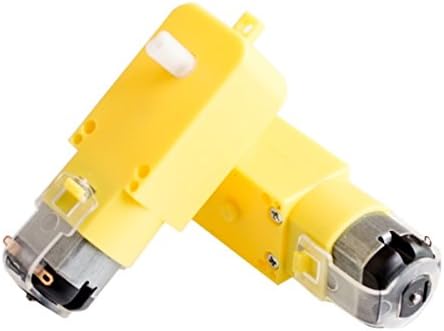
Can you explain the role of backlash in gear motors and how it’s managed in design?
Backlash plays a significant role in gear motors and is an important consideration in their design and operation. Backlash refers to the slight clearance or play between the teeth of gears in a gear system. It affects the precision, accuracy, and responsiveness of the gear motor. Here’s an explanation of the role of backlash in gear motors and how it is managed in design:
1. Role of Backlash:
Backlash in gear motors can have both positive and negative effects:
- Compensation for Misalignment: Backlash can help compensate for minor misalignments between gears, shafts, or the load. It allows a small amount of movement before engaging the next set of teeth, reducing the risk of damage due to misalignment. This can be particularly beneficial in applications where precise alignment is challenging or subject to variations.
- Negative Impact on Accuracy and Responsiveness: Backlash can introduce a delay or “dead zone” in the motion transmission. When changing the direction of rotation or reversing the load, the gear teeth must first overcome the clearance or play before engaging in the opposite direction. This delay can reduce the overall accuracy, responsiveness, and repeatability of the gear motor, especially in applications that require precise positioning or rapid changes in direction or speed.
2. Managing Backlash in Design:
Designers employ various techniques to manage and minimize backlash in gear motors:
- Tight Manufacturing Tolerances: Proper manufacturing techniques and tight tolerances can help minimize backlash. Precision machining and quality control during the production of gears and gear components ensure closer tolerances, reducing the amount of play between gear teeth.
- Preload or Pre-tensioning: Applying a preload or pre-tensioning force to the gear system can help reduce backlash. This technique involves introducing an initial force or tension that eliminates the clearance between gear teeth. It ensures immediate contact and engagement of the gear teeth, minimizing the dead zone and improving the overall responsiveness and accuracy of the gear motor.
- Anti-Backlash Gears: Anti-backlash gears are designed specifically to minimize or eliminate backlash. They typically feature modifications to the gear tooth profile, such as modified tooth shapes or special tooth arrangements, to reduce clearance. Anti-backlash gears can be used in gear motor designs to improve precision and minimize the effects of backlash.
- Backlash Compensation: In some cases, backlash compensation techniques can be employed. These techniques involve monitoring the position or movement of the load and applying control algorithms to compensate for the backlash. By accounting for the clearance and adjusting the control signals accordingly, the effects of backlash can be mitigated, improving accuracy and responsiveness.
3. Application-Specific Considerations:
The management of backlash in gear motors should be tailored to the specific application requirements:
- Positioning Accuracy: Applications that require precise positioning, such as robotics or CNC machines, may require tighter backlash control to ensure accurate and repeatable movements.
- Dynamic Response: Applications that involve rapid changes in direction or speed, such as high-speed automation or servo control systems, may require reduced backlash to maintain responsiveness and minimize overshoot or lag.
- Load Characteristics: The nature of the load and its impact on the gear system should be considered. Heavy loads or applications with significant inertial forces may require additional backlash management techniques to maintain stability and accuracy.
In summary, backlash in gear motors can affect precision, accuracy, and responsiveness. While it can compensate for misalignments, backlash may introduce delays and reduce the overall performance of the gear motor. Designers manage backlash through tight manufacturing tolerances, preload techniques, anti-backlash gears, and backlash compensation methods. The management of backlash depends on the specific application requirements, considering factors such as positioning accuracy, dynamic response, and load characteristics.
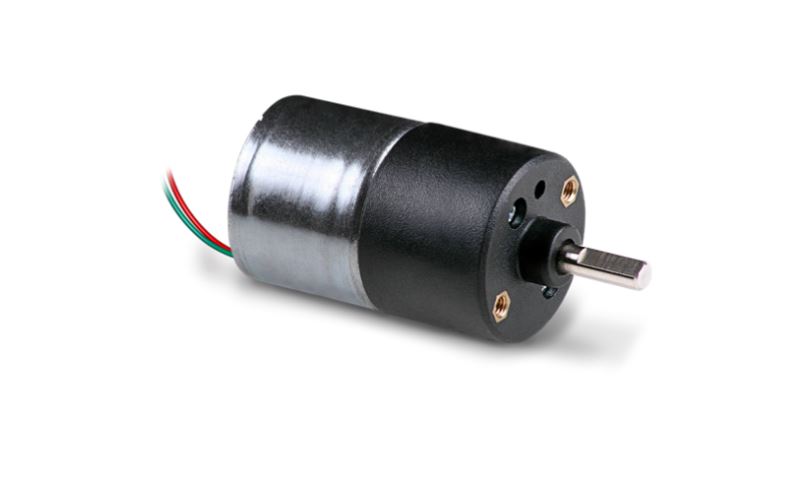
How does the gearing mechanism in a gear motor contribute to torque and speed control?
The gearing mechanism in a gear motor plays a crucial role in controlling torque and speed. By utilizing different gear ratios and configurations, the gearing mechanism allows for precise manipulation of these parameters. Here’s a detailed explanation of how the gearing mechanism contributes to torque and speed control in a gear motor:
The gearing mechanism consists of multiple gears with varying sizes, tooth configurations, and arrangements. Each gear in the system engages with another gear, creating a mechanical connection. When the motor rotates, it drives the rotation of the first gear, which then transfers the motion to subsequent gears, ultimately resulting in the output shaft’s rotation.
Torque Control:
The gearing mechanism in a gear motor enables torque control through the principle of mechanical advantage. The gear system utilizes gears with different numbers of teeth, known as gear ratio, to adjust the torque output. When a smaller gear (pinion) engages with a larger gear (gear), the pinion rotates faster than the gear but exerts more force or torque. This results in torque amplification, allowing the gear motor to deliver higher torque at the output shaft while reducing the rotational speed. Conversely, if a larger gear engages with a smaller gear, torque reduction occurs, resulting in higher rotational speed at the output shaft.
By selecting the appropriate gear ratio, the gearing mechanism effectively adjusts the torque output of the gear motor to match the requirements of the application. This torque control capability is essential in applications that demand high torque for heavy lifting or overcoming resistance, as well as applications that require lower torque but higher rotational speed.
Speed Control:
The gearing mechanism also contributes to speed control in a gear motor. The gear ratio determines the relationship between the rotational speed of the input shaft (driven by the motor) and the output shaft. When a gear motor has a higher gear ratio (more teeth on the driven gear compared to the driving gear), it reduces the output speed while increasing the torque. Conversely, a lower gear ratio increases the output speed while reducing the torque.
By choosing the appropriate gear ratio, the gearing mechanism allows for precise speed control in a gear motor. This is particularly useful in applications that require specific speed ranges or variations, such as conveyor systems, robotic movements, or machinery that needs to operate at different speeds for different tasks. The speed control capability of the gearing mechanism enables the gear motor to match the desired speed requirements of the application accurately.
In summary, the gearing mechanism in a gear motor contributes to torque and speed control by utilizing different gear ratios and configurations. It enables torque amplification or reduction, depending on the gear arrangement, allowing the gear motor to deliver the required torque output. Additionally, the gear ratio also determines the relationship between the rotational speed of the input and output shafts, providing precise speed control. These torque and speed control capabilities make gear motors versatile and suitable for a wide range of applications in various industries.


editor by CX 2024-04-12
China Professional Big Power Electric Differential Rickshaw Tricycle Brushless DC Motor 1200 Watts to 3000W 48V 60V 72V With Disc Brake Rear Bridge near me manufacturer
Warranty: 3months-1year
Model Number: YL1424
Usage: Car, Electric Bicycle, Scooter,Small Electric motorcycle
Type: Brushless Motor
Torque: 14N.m
Construction: Permanent Magnet
Commutation: Brushless
Protect Feature: Drip-proof
Speed(RPM): 3200RPM-4800rpm
Continuous Current(A): less than 12.5/9.4A
Efficiency: more than 75 %
Other name: Electric Differential Tricycle rEAR Bridge Brushless DC Motor
Product name: Rear Bridge Brushless DC MOTOR
Motor Weight: 11 KG
Rated Output Power: 1200W-3000W
Product rated Voltage: 36/48/60V DC
Product Rated Torque: 14N.m
Application: Small and Medium size E-Tricycle
Certification: CCC
Packaging Details: Rear Bridge Brushless DC MOTOR Packing:Standard export package,details please contact with us.
Port: HangZhou/ZheJiang
YALUMOTOR Newly best sell Bigger Power Electric Differential Rickshaw Four wheeled Tricycle Brushless DC Motor 1200 Watts to 3000W 48V 60V 72V With Integrated Disc Brake Gear Bridge Motor
Description of Rear Bridge Brushless DC MOTOR:
Must Reading and Notice Before Order:
THE Rear Axle Mainly have Drum Brake,Disc Brake 2 type brake system.
The rear axle size is custom make as per customer demand.
Before Ordering, please confirm the item can fit on your vehicle. To ensure the axle length can install on the vehicle.The item no stock.due to the axle length need make as per customer demand.
So when customer place order, need inform us the following information:
1. The motor volt and power need(The power various from 500W to 5KW )? example: 500W 48V.
2.The axle brake system you need is disc brake or drum brake type?
3. The axle length you need is how much(Or tell us the vehicle width also ok,we will make the axle length as per it)? See below photo the axle length measure way:
For the bigger power AXLE,Our axle length generally have 77cm,83cm,87cm,93cm,103cm 5 length axle for your reference. So when you place order, must tell us the exactly axle length you need.
The motor cooling fan cover have black and blue 2 colors ,it will delivery as in random if customer no special requires for the cover color.
About the Length of Rear Axle:
The Length of rear axle is the inner pipe length between the brake plates,not include the hub size.The size please reference to Below:
Vehicle Width around 98cm,Fit inner width 77cm;
Vehicle Width around 105cm,Fit inner width 83cm;
Vehicle Width around 110cm,Fit inner width 87cm;
Vehicle Width around 115cm,Fit inner width 93cm;
Vehicle Width around 125cm,Fit inner width 103cm;
Vehicle Width around 130cm,Fit inner width 109cm;
The above sizes only for reference, exactly size please contact with us to confirm!
The Power and Volt and Speed Optional Reference as following:
1200W Disc brake set
60V1500W disc brake set Speed 3200rpm
60V1500W disc brake set Speed 4600rpm
72V1500W disc brake set Speed 3200rpm
72V1500W disc brake set Speed 4600rpm
60V2000W disc brake set Speed 3000rpm
60V2000W disc brake set Speed 4800rpm
72V2000W disc brake set Speed 3000rpm
72V2000W disc brake set Speed 4600rpm
60V2200W disc brake set Speed 3200rpm
60V2200W disc brake set Speed 5000rpm
72V2200W disc brake set Speed 3400rpm
72V2200W disc brake set Speed 4600rpm
60V2500W disc brake set Speed 3200rpm
60V2500W disc brake set Speed 4600rpm
72V2500W disc brake set Speed 3400rpm
72V2500W disc brake set Speed 4600rpm
60V3000W disc brake set Speed 3000rpm
60V3000W disc brake set Speed 4200rpm
72V3000W disc brake set Speed 3600rpm
72V3000W disc brake set Speed 4800rpm
The Characteristic of YALU Rear Axle Motor Assembly:
Thickened steel pipe, strong load capacity, durable and powerful
With high and low gear, easy climbing
Super heavy load, reasonable and scientific design, smooth surface without burrs.
The output voltage is stable, it can run for a long time, and Long wear-resistant life.
Application:
Suitable for a variety of vehicles
Passenger Electric Tricycle
Pulling Goods Electric Tricycle
Older Scooter
Sanitation Vehicle
Applicable Vehicle models:
1. Electric cargo tricycle– Pull billet car
2. Electric enclosed tricycle–Pulls passenger car
3. Electric four-wheeled vehicles, older-fashioned scooters, and miniature cars.
4. Modified cars, dissimilar cars and other driving equipment.
Product Picture Product Picture Pictures of Rear Bridge Brushless DC MOTOR:
Recommanded Products
About Us Company Profile
HangZhou Yalu Electric Co., Ltd. is a technology,industry and trade integrated comprehensive enterprise. After years of development, has a number of production plants. The products formed Motor&Parts,Industry Cabinet Lock 2 ranges. The production stability, technical maturity.who enjoyed a good reputation on the industry…
Our Workshop
Our Team
Our Exhibition
Customer Visit
Payment & Shipping Payment & Shipping
PAYMENT:
1. We accept Bank Transfer, Western Union, Alibaba Escrow and Paypal. 2.Please make sure to confirm the order when you receive the items in a good condition, because when you place a order, your money is transferring into the Escrow, not our account. SHIPPING: 1. For the Motor item,due to it have magnetic,the reasonable shipping way is commercial express company. The other way like EMS and china air post are slowly and some places track feedback slowly. Please choose the most of you prefer delivery way. 2.The most reliable,affordable way of shipping method depends on your address.you may choose freely as your wish on our shipment column.
Delivery time:
1.Within 3-15 working days after payment receipt confirmed(based on order quantity) .Custom make item
will be need disccuss another.
2. Xihu (West Lake) Dis. time depends on destination,delivery way of your select and other factors, it may takes up to more days.
3. Shipping may influenced by holidays, events and other uncertainties. We could not guarantee the arrival time.
FAQ FAQ
Q:What is the MOQ of your company Item?
A:The different model item, MOQ is different. you may reference on the item link page MOQ quantity.
For more details you want know about the item, feel free contact with us!
Q: What is your company for sample policy?
A: We can offer sample to client test the quality. When sample cost below5USD,Sample cost freely,the express cost on have on client duty. When express cost between 5-20USD,The client pay sample cost and freight cost. But the sample cost can refund to client when mass order.
Q: What is your payment terms?
A1:You can place order online,payment via alipay.
A2: When order amount less 5000USD, 100% TT Advance.
A3: When above 5000USD, 50% deposit,balance before shipment by TT.
A4: Except the TT, we also accept L/C,Western union, paypal, moneygram.
Q: What is your delivery time?
A1: For stock items, delivery time within 7days;
A2: For small order common item, delivery time around 7-15days;
A3: For Mass order common item, delivery time around 20-30days;
A4: For special making item, per the real situations discussed with our sales person.
Q: What is your company warranty?
A: All of our products are 100% brand new and quality testing before shipping. The different item warranty period different. For lock,the warranty is 12-18 month. During the warranty period,if goods have any problem,we will send spare parts for your repair and replace. But if the goods are damaged by personal,we are not responsible. the exachange spare parts or items international freight cost on customer duty.
Q: Can i ask you help purchase other suppliers items mix in 1 container?
A:Yes,we can offer the humanize service for client. We would like to help client let is the business as simple as possible.
Q: Can you offer OEM or ODM?
A:Yes,we can! But we need client offer clear drawing or sample.
Q: Can i be your company sale agent in our market?
A:Yes,we will depend on the sales turn over and also do research on your market. Please contact with our sales person for details.
Q: Can you company offer door to door service?
A:Yes,we can offer the door to door service not only express,also sea shipment.
Q: How can i trust you?
A1: We are starting manufacturer the motors from 1980S. Have more than 20 years production experience. We are looking for long term business cooperate with client.not 1 time business.A2: On item quality: Our production concept: manufacturing high-quality products,escort the safety and convenience for user.A3: Our corporate values: Give customers a good, fair deal. Do not try to maximize the short-term profits at the expense of building those enduring relationships.We should never let the conflict which generating from profit center to obstruct our quality service for customers.
Contact Us Contact Us @@@@@@@@@@
Company Name: HangZhou Yalu Electric Co., Ltd.Address: Caotian Hou Village,Liushi Town,HangZhou, ZHangZhoug,China
Full Name: MarinaWhatsapp/Viber/Wechat/Mobile: 137 8571 6710 Tel/Fax: 577 6161 7377Email: yalu@ wzyalu.comSkype: marina.wu
QQ: 557114276
Trademanager ID: wzyalu
Web: wzyalu.com
Website on alibaba.com: wzyalu.en.alibaba.com
If you want to know more about our products please feel free to contact us now!
>>>>>>>>>>>>>>>> Why Choose Us ? <<<<<<<<<<<<<<<<
Any enquiries are warmly welcomed.and we’d like to offer our sincere service to promote our cooperation.
>>>>>>>>>>>>>>>> Contact Supplier <<<<<<<<<<<<<<<<
Trade AssuranceIt’s Free!Get Full Protection for Your Orders.
>>>>>>>>>>>>>>>> Start Order <<<<<<<<<<<<<<<<
Please click the button below to view our homepage.
TO HOMEPAGE >>
Rear Bridge Brushless DC MOTOR
Benefits of a Planetary Motor
A planetary motor has many benefits. Its compact design and low noise makes it a good choice for any application. Among its many uses, planetary gear motors are found in smart cars, consumer electronics, intelligent robots, communication equipment, and medical technology. They can even be found in smart homes! Read on to discover the benefits of a planetary gear motor. You’ll be amazed at how versatile and useful it is!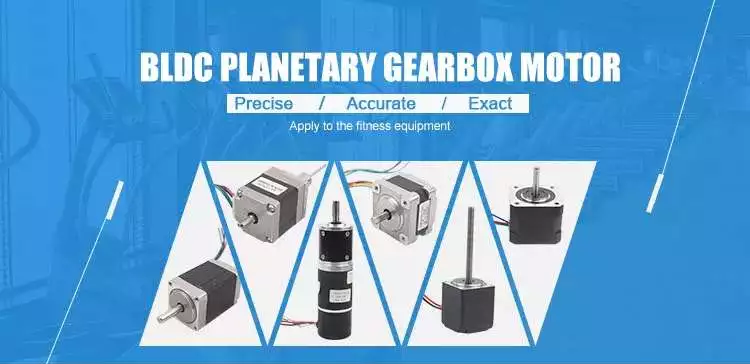
Self-centering planet gears ensure a symmetrical force distribution
A planetary motor is a machine with multiple, interlocking planetary gears. The output torque is inversely proportional to the diameters of the planets, and the transmission size has no bearing on the output torque. A torsional stress analysis of the retaining structure for this type of motor found a maximum shear stress of 64 MPa, which is equivalent to a safety factor of 3.1 for 6061 aluminum. Self-centering planet gears are designed to ensure a symmetrical force distribution throughout the transmission system, with the weakest component being the pinions.
A planetary gearbox consists of ring and sun gears. The pitch diameters of ring and planet gears are nearly equal. The number of teeth on these gears determines the average gear-ratio per output revolution. This error is related to the manufacturing precision of the gears. The effect of this error is a noise or vibration characteristic of the planetary gearbox.
Another design for a planetary gearbox is a traction-based variant. This design eliminates the need for timing marks and other restrictive assembly conditions. The design of the ring gear is similar to that of a pencil sharpener mechanism. The ring gear is stationary while planet gears extend into cylindrical cutters. When placed on the sun’s axis, the pencil sharpening mechanism revolves around the ring gear to sharpen the pencil.
The JDS eliminates the need for conventional planetary carriers and is mated with the self-centering planet gears by dual-function components. The dual-function components synchronize the rolling motion and traction of the gears. They also eliminate the need for a carrier and reduce the force distribution between the rotor and stator.
Metal gears
A planetary motor is a type of electric drive that uses a series of metal gears. These gears share a load attached to the output shaft to generate torque. The planetary motor is often CNC controlled, with extra-long shafts, which allow it to fit into very compact designs. These gears are available in sizes from seven millimeters to 12 millimeters. They can also be fitted with encoders.
Planetary gearing is widely used in various industrial applications, including automobile transmissions, off-road transmissions, and wheel drive motors. They are also used in bicycles to power the shift mechanism. Another use for planetary gearing is as a powertrain between an internal combustion engine and an electric motor. They are also used in forestry applications, such as debarking equipment and sawing. They can be used in other industries as well, such as pulp washers and asphalt mixers.
Planetary gear sets are composed of three types of gears: a sun gear, planet gears, and an outer ring. The sun gear transfers torque to the planet gears, and the planet gears mesh with the outer ring gear. Planet carriers are designed to deliver high-torque output at low speeds. These gears are mounted on carriers that are moved around the ring gear. The planet gears mesh with the ring gears, and the sun gear is mounted on a moveable carrier.
Plastic planetary gear motors are less expensive to produce than their metal counterparts. However, plastic gears suffer from reduced strength, rigidity, and load capacity. Metal gears are generally easier to manufacture and have less backlash. Plastic planetary gear motor bodies are also lighter and less noisy. Some of the largest plastic planetary gear motors are made in collaboration with leading suppliers. When buying a plastic planetary gear motor, be sure to consider what materials it is made of.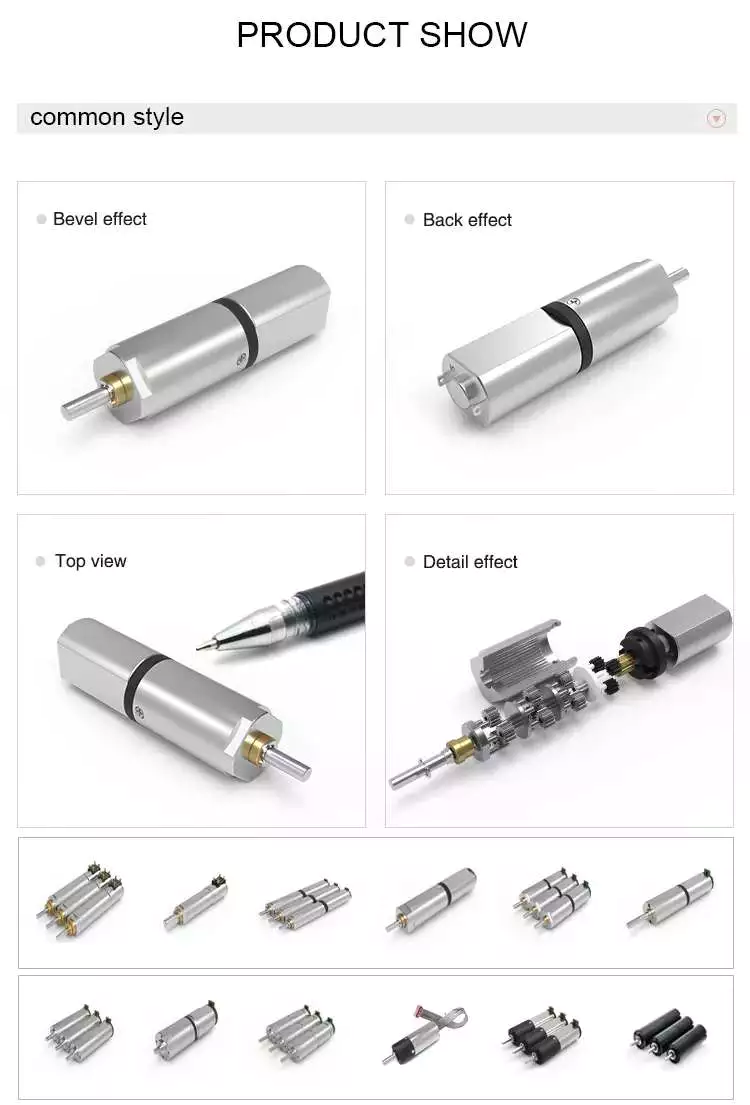
Encoder
The Mega Torque Planetary Encoder DC Geared Motor is designed with a Japanese Mabuchi motor RS-775WC, a 200 RPM base motor. It is capable of achieving stall torque at low speeds, which is impossible to achieve with a simple DC motor. The planetary encoder provides five pulses per revolution, making it perfect for applications requiring precise torque or position. This motor requires an 8mm hex coupling for proper use.
This encoder has a high resolution and is suitable for ZGX38REE, ZGX45RGG and ZGX50RHH. It features a magnetic disc and poles and an optical disc to feed back signals. It can count paulses as the motor passes through a hall on the circuit board. Depending on the gearbox ratio, the encoder can provide up to two million transitions per rotation.
The planetary gear motor uses a planetary gear system to distribute torque in synchrony. This minimizes the risk of gear failure and increases the overall output capacity of the device. On the other hand, a spur gear motor is a simpler design and cheaper to produce. The spur gear motor works better for lower torque applications as each gear bears all the load. As such, the torque capacity of the spur gear motor is lower than that of a planetary gear motor.
The REV UltraPlanetary gearbox is designed for FTC and has three different output shaft options. The output shaft is made of 3/8-inch hex, allowing for flexible shaft replacement. These motors are a great value as they can be used to meet a wide range of power requirements. The REV UltraPlanetary gearbox and motor are available for very reasonable prices and a female 5mm hex output shaft can be used.
Durability
One of the most common questions when selecting a planetary motor is “How durable is it?” This is a question that’s often asked by people. The good news is that planetary motors are extremely durable and can last for a long time if properly maintained. For more information, read on! This article will cover the durability and efficiency of planetary gearmotors and how you can choose the best one for your needs.
First and foremost, planetary gear sets are made from metal materials. This increases their lifespan. The planetary gear set is typically made of metals such as nickel-steel and steel. Some planetary gear motors use plastic. Steel-cut gears are the most durable and suitable for applications that require more torque. Nickel-steel gears are less durable, but are better able to hold lubricant.
Durability of planetary motor gearbox is important for applications requiring high torque versus speed. VEX VersaPlanetary gearboxes are designed for FRC(r) use and are incredibly durable. They are expensive, but they are highly customizable. The planetary gearbox can be removed for maintenance and replacement if necessary. Parts for the gearbox can be purchased separately. VEX VersaPlanetary gearboxes also feature a pinion clamped onto the motor shaft.
Dynamic modeling of the planetary gear transmission system is important for understanding its durability. In previous studies, uncoupled and coupled meshing models were used to investigate the effect of various design parameters on the vibration characteristics of the planetary gear system. This analysis requires considering the role of the mesh stiffness, structure stiffness, and moment of inertia. Moreover, dynamic models for planetary gear transmission require modeling the influence of multiple parameters, such as mesh stiffness and shaft location.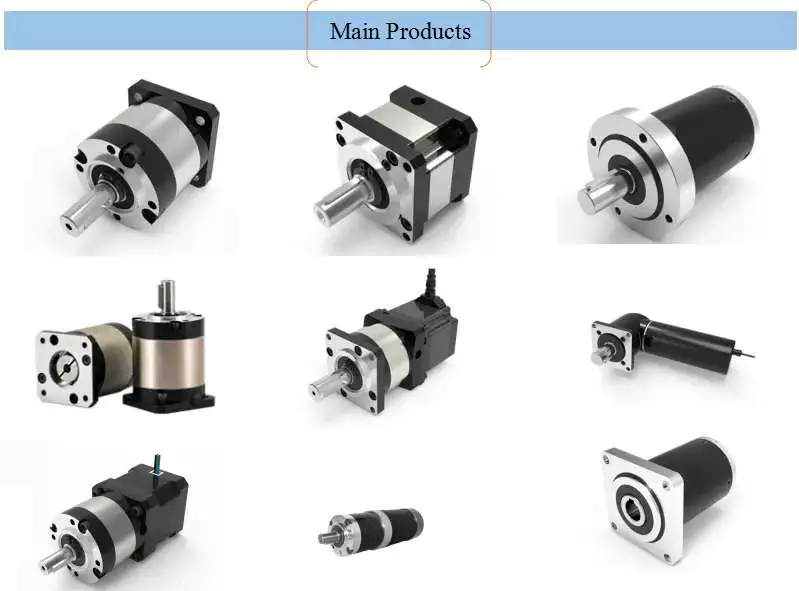
Cost
The planetary gear motor has multiple contact points that help the rotor rotate at different speeds and torques. This design is often used in stirrers and large vats of liquid. This type of motor has a low initial cost and is more commonly found in low-torque applications. A planetary gear motor has multiple contact points and is more effective for applications requiring high torque. Gear motors are often found in stirring mechanisms and conveyor belts.
A planetary gearmotor is typically made from four mechanically linked rotors. They can be used for various applications, including automotive and laboratory automation. The plastic input stage gears reduce noise at higher speeds. Steel gears can be used for high torques and a modified lubricant is often added to reduce weight and mass moment of inertia. Its low-cost design makes it an excellent choice for robots and other applications.
There are many different types of planetary gear motors available. A planetary gear motor has three gears, the sun gear and planet gears, with each sharing equal amounts of work. They are ideal for applications requiring high torque and low-resistance operation, but they require more parts than their single-stage counterparts. The steel cut gears are the most durable, and are often used in applications that require high speeds. The nickel-steel gears are more absorptive, which makes them better for holding lubricant.
A planetary gear motor is a high-performance electrical vehicle motor. A typical planetary gear motor has a 3000 rpm speed, a peak torque of 0.32 Nm, and is available in 24V, 36V, and 48V power supply. It is also quiet and efficient, requiring little maintenance and offering greater torque to a modern electric car. If you are thinking of buying a planetary gear motor, be sure to do a bit of research before purchasing one.


in Vladivostok Russian Federation sales price shop near me near me shop factory supplier Yej2 Standard Efficiency Three Phase AC Induction Electric Electromagnetic Brake Motor Catalogue 0.18~200kw for Conveyors Yej2-90s-2 1.5kw 2880rpm manufacturer best Cost Custom Cheap wholesaler

If you are fascinated in any of our goods or would like to discuss a likely order, remember to feel free to contact us. EPG has established up a full set of high quality management system which is offered with innovative inspection and examination products. The team is focused on creating all assortment of normal roller chains and sprockets, gears & gearboxes, this sort of as conveyor chain & sprockets , stainless metal chain, agricultural chain and has not just offered its items all in excess of china, but also marketed a lot more than sixty five% items to oversees, including Europe, The united states, South-east Asia, and it also has established up storage logistics in locations like Europe.
YEJ2 StXiHu (West Lake) Dis.Hu (West Lake) Dis.rd Performance Three Stage AC Induction Electric Electromagnetic EPTrake Motor Catalogue .18~200KW for conveyors
———————————————————————————————
Programs
Widely used for driving EPT equipment, printing EPTry, forging press, transportation EPTry, EPT EPTry, food EPTry, design EPTry, and woodworking EPTry where swift quit, exact braking, reciprocated operation are demanded.
EPT Description:
- Frame measurements: 80 to 315
- Rated output: .18 to 220kW
- Voltage: 380V
- Frequency: 50Hz
- Effectiveness ranges: IE1
- Enclosure: IC411 – TEFC
- Diploma of protection: IP55 (motor) amp IP23 (brake)
- EPTraking mode: EPT failure brake
- Rectification code: 1-fifty percent time period rectification
Functions
Electromagnetic brake, quick braking, vitality conserving, straightforward composition, actual position.
Optional Features:
Electrical:
Insulation Class:H
Thermal Protection: PTC Thermistor, Thermostat or PT100
Mechanical:
Other individuals mountings
Sealing:Lip seal, Oil seal
Room Heater
Drain Hole
Mounting
Standard mounting sort and suited frame size are provided in pursuing table(with quot radic quot)
| Body | fundamental variety | derived variety | ||||||||||||||
| EPT3 | EPT5 | EPT35 | V1 | V3 | V5 | V6 | EPT6 | EPT7 | EPT8 | V15 | V36 | EPT14 | EPT34 | V18 | ||
| 80~112 | radic | radic | radic | radic | radic | radic | radic | radic | radic | radic | radic | radic | radic | radic | radic | |
| 132~one hundred sixty | radic | radic | radic | radic | radic | radic | radic | radic | radic | radic | radic | radic | – | – | – | |
| a hundred and eighty~280 | radic | radic | radic | radic | – | – | – | – | – | – | – | – | – | – | – | |
| 315 | radic | – | radic | radic | – | – | – | – | – | – | – | – | – | – | – | |
If there is no other ask for in the orEPTor arrangement, terminal box stXiHu (West Lake) Dis.Hu (West Lake) Dis.rd placement is at the rigEPT aspect of the frame knowledge over may possibly be changed with out prior observe.
Website
Show Place
Certificates
Top quality Provider
EPT Control
EPT Motor Generation Workshop and Circulation Chart
Hundreds of Certificates, Honors and more Company data make sure you go to quotAEPTOUT US quot
—————————————————————————————————————————
Welcome to get in touch with us directly…
https://youtu.be/frVvg3yQqNM
WANNAN MOTOR EPT Options


in Vladivostok Russian Federation sales price shop near me near me shop factory supplier Yej AC Electromagnetic Brake Electric Motor Yej132s2-2 manufacturer best Cost Custom Cheap wholesaler

EPG was awarded with “famous product of Zhejiang Province” and “famous manufacturer of Zhejiang Province”. Furthermore, all our production procedures are in compliance with ISO9002 expectations. we offer you 1-end solution for the acquire of mechanical energy transmission items in China. WHY Choose US ?
one.We are professional electric powered motor manufacture for 30 many years considering that 1986.
two.We have very best good quality resources to make our electric motors best efficiency.
three.Our merchandise are one hundred% cooper wire , one hundred% output.
4.We have superior test EPT to make the a hundred% certified merchandise for our customers.
five.We have superior winding , portray, assembly and EPT equipments generation line which make our merchandise good look, great overall performance and nicely packaged.
six.We have superior and automatic EPTs this sort of as higher speed punching EPTs, swing punching EPTs, EPTs to form the rotors ,stators etc. in a single piece, automated EPT EPTs which can produce wonderful appearance and good efficiency motors while lessen the labor cost and mechanical loss .
7.We have specialist finXiHu (West Lake) Dis.Hu (West Lake) Dis.al section who are very good at calculating and managing the value and money procedure which could make most favorable prices for our customers.
eight,We have great encounter on OEM and ODM for any band which has trade letter permission
Our Services
one. Custom-made Manufacturing is obtainable.
two. Offer for OEM and Soon after Markets.
3. one hundred% analyzed for the good quality prior to shipment
four. Certification and Promise: ISO 9001:2008,CE / 1 year
5. bundle: carton amppallet
6. IE1 a few phase electric motors, solid iron and aluminium body
7. IE2 and IE3 solid iron and aluminium frame electric motors
8. EPTrake electrical motors
nine. Expostion evidence electric powered motors
ten. aggressive price tag
eleven. thirty several years production encounter
12. Specific motors can be developed in accordance to customers’ requirements
Att:Our organization price tag was dependent on higher heigEPT cold rolled metal stator to guarantee the efficiency ,if you want to cheaper ,you can pick limited heigEPT stator or hot chilly rolled metal stator ,thankyou
Product particulars
YEJ Sequence Electromagnetic EPTrake Motors have attributes this kind of as little quantity, straightforward structure and powerful EPTity. The motors have lower sounds, reputable braking performance and use to operation problems this sort of as speedy cease, exact positioning, reciprocate working and sliding avoiding. This sequence motors are constant obligation S1, and can also derive S3,S4 as per customers’ need. YEJ collection motors can comprehend speedy braking when the motor missing EPT. The motors are broadly employed in EPTry EPT these kinds of as wind EPT generation yaw brake and EPT resource, EPT, woodworking, chemical industry, textile, design.
(Note: The management cabinet can be EPT in accordance to diverse demands.)
| YEJ Collection | |
| CEPTr Peak of Body | H80 – H250mm |
| Rated EPT | .5KW – 55KW |
| Offer Voltage, Frequency | 380V, 50Hz (can be customized) |
| Security Quality | IP44, IP54 |
| Thermal Course | 155 (F) |
| Cooling | IC411 |
Relationship
connection method unEPT3KW link strategy previously mentioned 3KW
FAQ
Q1: What about the transport strategies?
one): For urgent orEPTand ligEPT bodyweight, you can decide on the following categorical: UPS, FedEx, TNT, DHL, EMS.
For heavy weight, you can select to produce the merchandise by air or by sea to save cost.
Q2: What about the payment methods?
A2: We acknowledge T/T, L/C for big sum, and for little sum, you can spend us by PayPal, Western Union and many others.
Q3: How significantly does it expense to ship to my region?
A3: It depends on EPTons. Fee is diverse in diverse EPTons. You can consult us at all instances.
This fall: What is your shipping and delivery time?
A4: Normally we generate inside of 25-30daEPTafter the payment arrived.
Q5: Can I print our symbol/code/collection amount on your motor?
A5: Sure, of program.
Q6: Can I orEPTsome sample for our screening?
A6: Sure, but it wants some bills.
Q7: Can you customise my solution in EPT need?
A7: Of course, we can provide OEM.

